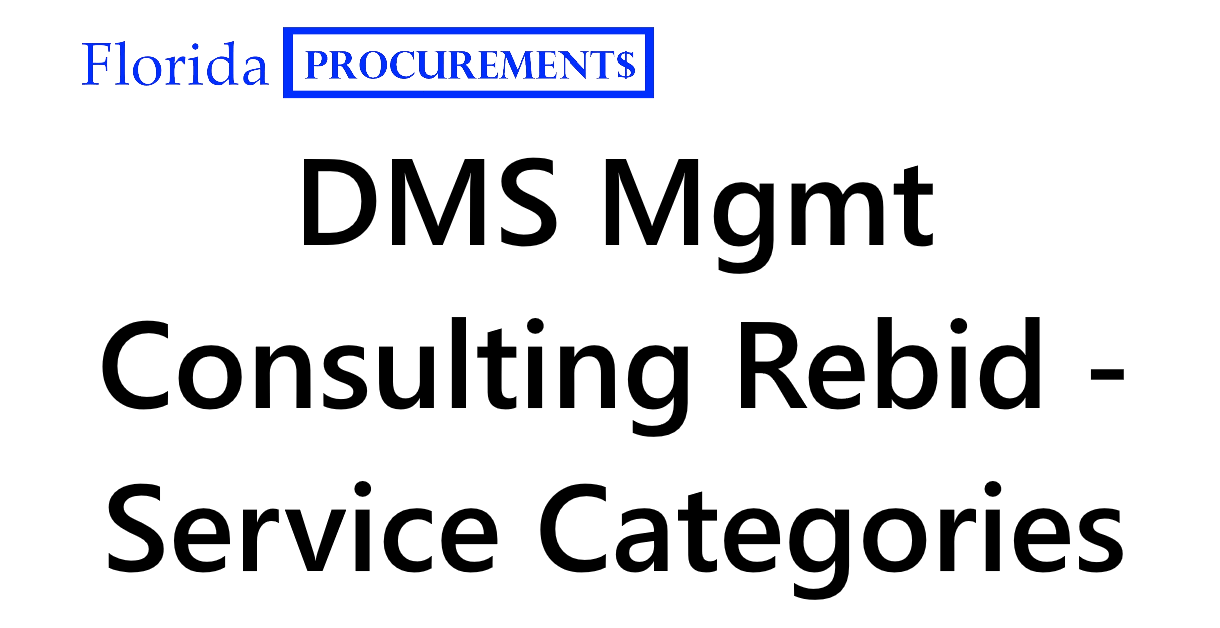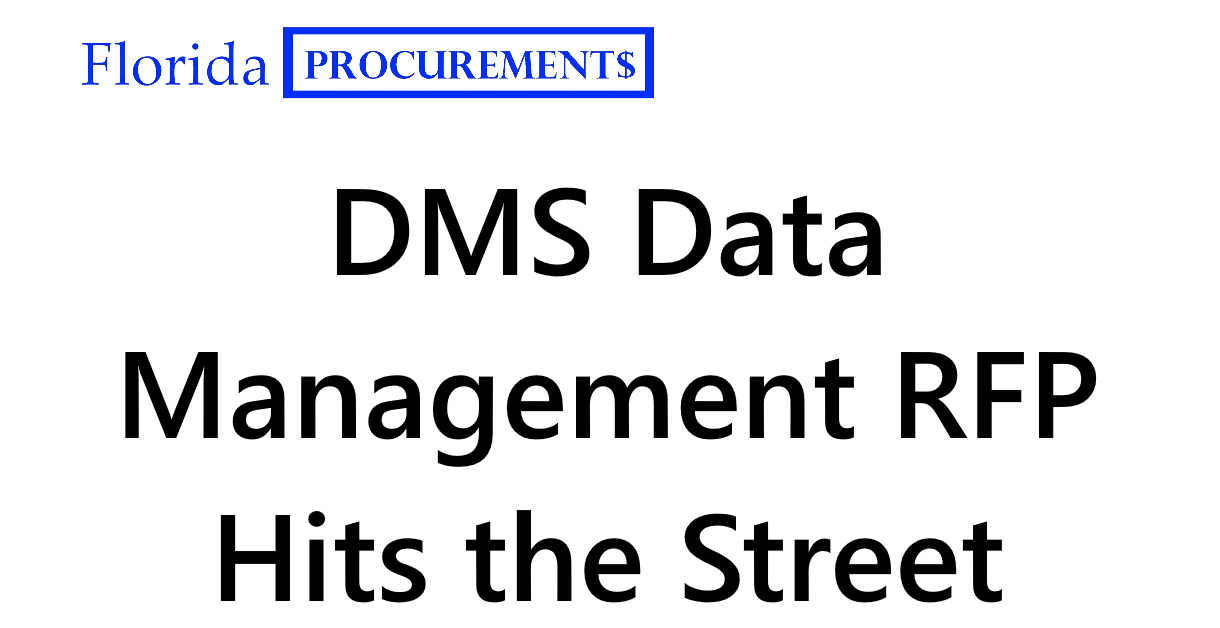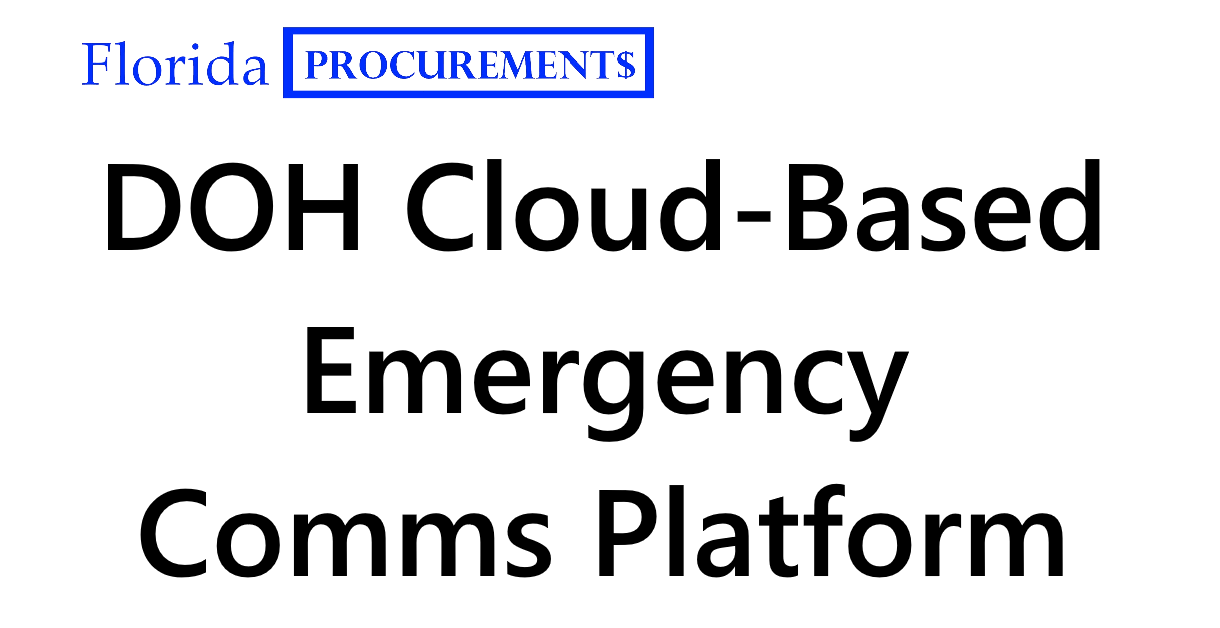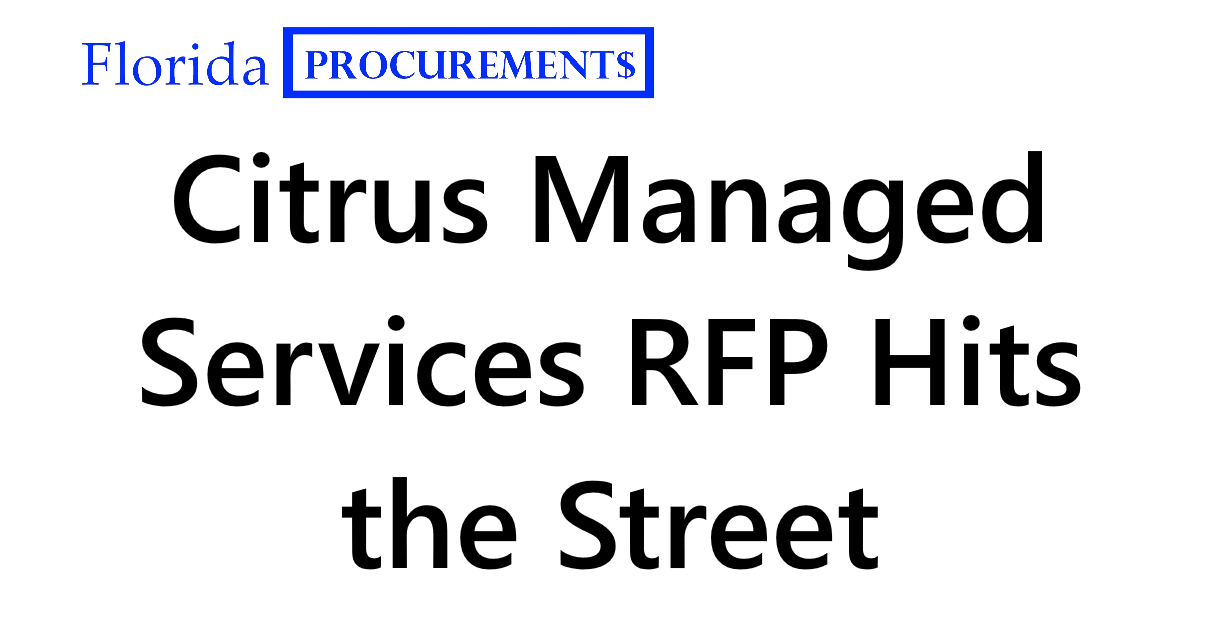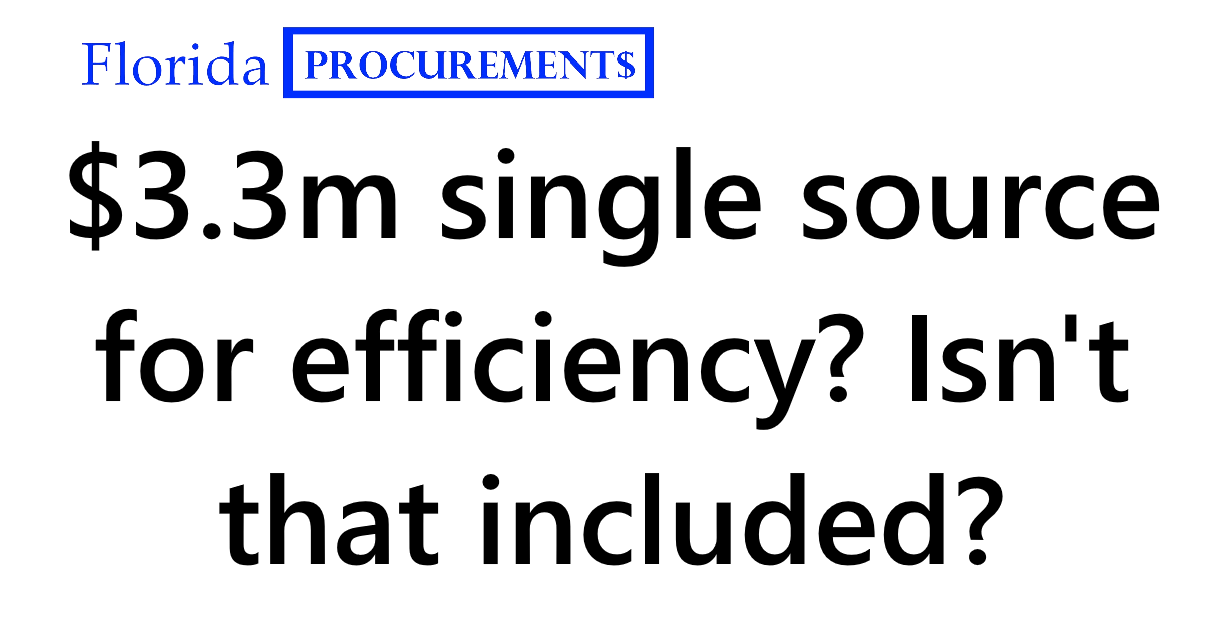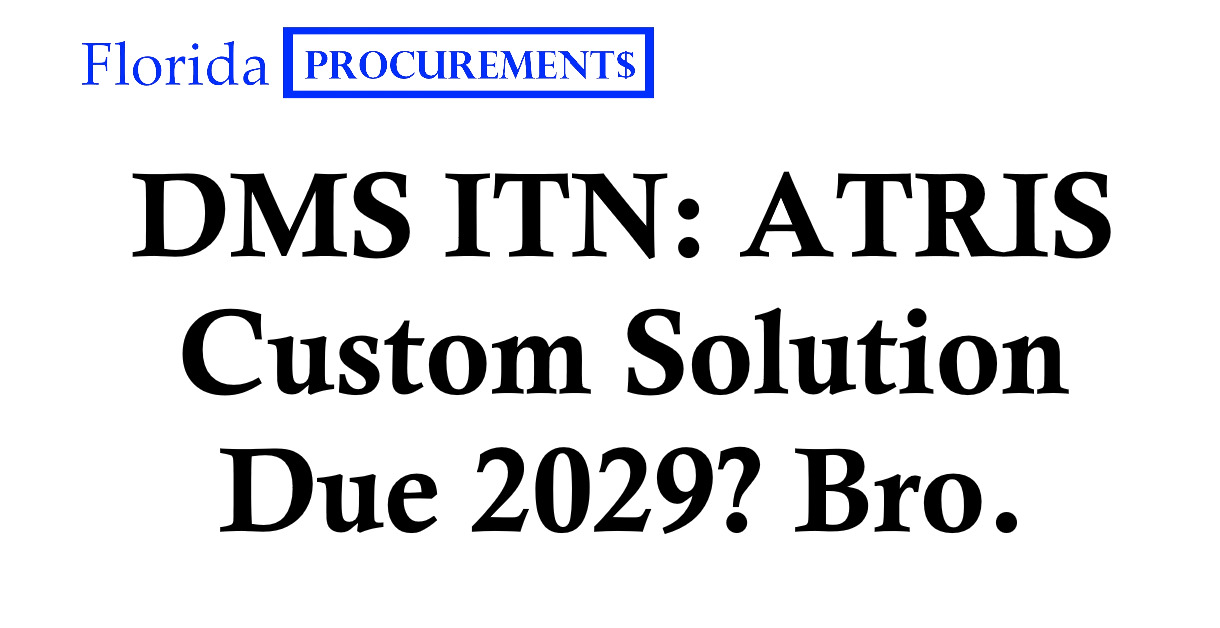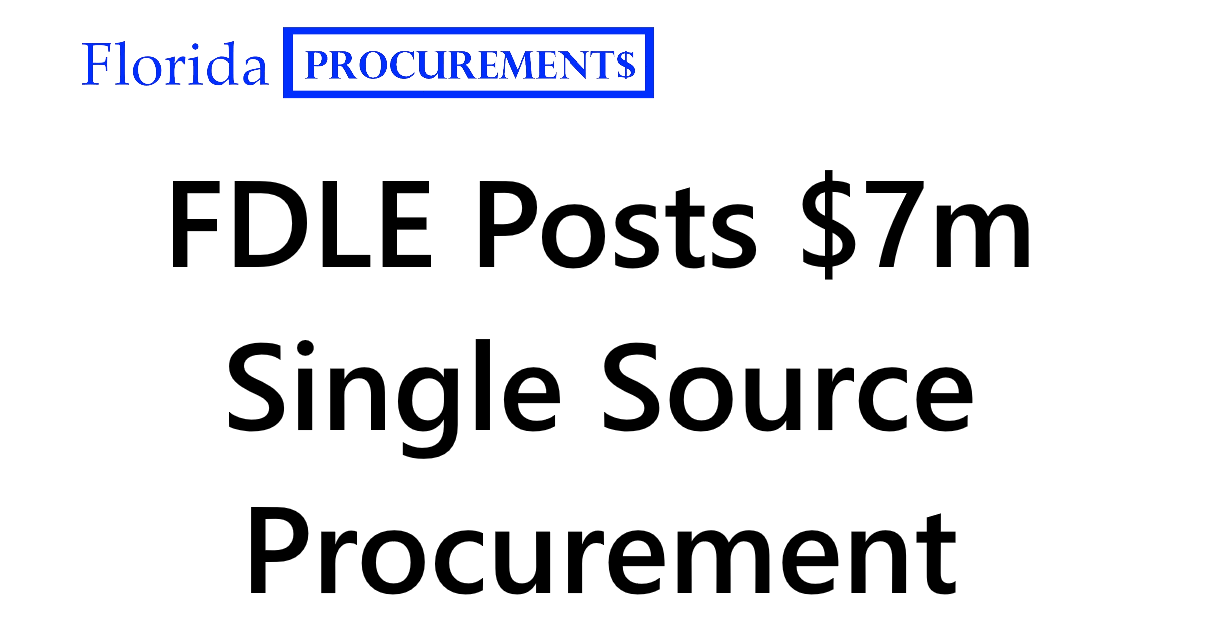
- June 5, 2025
- Sean Gellis
- 0
Welcome to FloridaProcurements.com (FlaProc), your authoritative resource for navigating Florida’s government contracting landscape, with particular focus on transportation and technology opportunities. FlaProc provides free, expert guidance to help companies identify and secure state contracting opportunities throughout Florida.
This resource is maintained by Attorney Sean Gellis of Gellis Law, PLLC, one of less than 75 attorneys Board Certified in State and Federal Government and Administrative Practice by The Florida Bar. Mr. Gellis brings unique insight to government contracting, having served as the Chief of Staff of the Florida Department of Management Services (DMS), General Counsel of the Florida Department of Transportation (FDOT), and Deputy General Counsel of the Florida Office of Insurance Regulation – positions that provided direct oversight of technology initiatives and issues of statewide importance. His record in bid protest litigation reflects the sophisticated advocacy and strategic thinking he brings to government contracting matters, particularly in complex transportation and technology procurements. Sean also leads Procurement Insider, a confidential subscription service that provides technology vendors with strategic intelligence and insider analysis of Florida government opportunities. Learn more about transforming your approach to government contracting at www.gellislaw.com/procurement-insider
FDLE’s $7 Million Single Source Contract: A Case Study in Vendor Capture and Innovation Challenges
The Florida Department of Law Enforcement (FDLE) recently posted a Description of Intended Single Source Purchase (PUR 7776) that deserves attention – not because it represents misconduct or impropriety, but because it perfectly illustrates how well-intentioned procurement decisions can create long-term challenges for innovation and competition in government contracting.
The $7 Million Laboratory Lock-In
FDLE’s planned single source acquisition with Life Technologies Corporation (now ThermoFisher Scientific) totals $7 million for the period July 1, 2025, through June 30, 2026. The procurement covers laboratory implements, software, and maintenance for FDLE’s crime laboratories conducting DNA analysis of criminal specimens.
At first glance, this appears to be a routine maintenance and supply contract. FDLE has used Applied BioSystems equipment since 2006, which was subsequently acquired by Life Technologies. The agency conducted what they describe as a “rigorous validation and selection process” and developed Standard Operating Procedures around this specific equipment platform.
The justification seems straightforward: proprietary equipment requires proprietary maintenance, software upgrades, and chemical reagents. Only Life Technologies has certified service engineers with access to authorized replacement parts and software updates.
The Procurement Paradox: When Good Decisions Create Future Problems
FDLE’s situation illustrates a fundamental challenge in government procurement that I’ve observed throughout my career in state government: initial procurement decisions that are entirely reasonable can create vendor dependency that becomes increasingly difficult to escape.
Consider FDLE’s position. In 2006, they likely conducted a competitive procurement and selected what they determined was the best available solution. They invested time and resources in validation, training, and developing procedures. They built institutional knowledge around this platform.
Fast-forward to 2025, and FDLE finds itself in what procurement professionals call “vendor capture” – a situation where switching costs have become so high that competitive procurement is no longer practical, even if better or more cost-effective alternatives exist.
The Innovation Stagnation Effect
Here’s what concerns me most about long-term single source relationships: they can inadvertently stifle innovation in critical areas of government operations.
When an agency becomes locked into a single vendor’s ecosystem, several things happen:
Market Signals Disappear: The vendor receives guaranteed revenue regardless of innovation pace or competitive pricing. There’s reduced incentive to invest heavily in breakthrough improvements when the customer base is captive.
Competitive Pressure Evaporates: Other companies may exit the market or reduce R&D investment when they recognize that a significant customer (the State of Florida) is effectively unreachable.
Institutional Knowledge Narrows: Agency staff become experts in one vendor’s solutions rather than maintaining broader technical knowledge that would enable evaluation of alternatives.
Cost Transparency Erodes: Without competitive benchmarking, it becomes difficult to determine whether pricing remains fair over time.
The Validation Trap
FDLE’s justification highlights what I call the “validation trap” – the circular reasoning that often accompanies vendor capture situations.
The agency states that their equipment “were subjected to a rigorous validation and selection process” and that “due to the standardized validation process and proprietary equipment, the chemical reagents, supplies, software upgrades and equipment maintenance is only available through Life Technologies Corporation.”
This reasoning, while logical, creates a self-reinforcing cycle. The more deeply an agency integrates with a proprietary system, the higher the switching costs become. The higher the switching costs, the more justified single source procurement appears.
But here’s the strategic question agencies should be asking: At what point does the cost of maintaining vendor independence outweigh the benefits of system integration?
Strategic Implications for Technology Vendors
For companies hoping to break into government markets dominated by established players, FDLE’s situation offers several lessons:
Timing Matters: The window for competitive entry often occurs during major technology transitions or when contracts are up for renewal. Missing these windows can mean waiting years for another opportunity.
Total Cost of Ownership Arguments: Vendors challenging incumbent providers need sophisticated TCO analyses that account for transition costs, retraining, and system integration challenges.
Interoperability as a Differentiator: Companies that can demonstrate seamless integration with existing systems or provide migration paths may have competitive advantages.
Long-term Partnership Approach: Simply offering lower prices rarely overcomes the switching costs in complex technical environments. Vendors need to demonstrate value through innovation, risk mitigation, and partnership benefits.
A Balanced Perspective on FDLE’s Decision
It’s important to note that FDLE’s procurement approach isn’t inherently problematic. Crime laboratory operations require absolute reliability and precision. The consequences of equipment failure or procedural errors in criminal investigations can be severe – potentially affecting the integrity of evidence and outcomes of criminal cases.
Given these stakes, FDLE’s preference for maintaining proven, validated systems is entirely understandable. The agency has legitimate operational requirements that justify their single source approach.
However, the broader procurement strategy raises questions about long-term sustainability and innovation that extend beyond any individual agency’s immediate needs.
Breaking the Cycle: Strategies for Maintaining Competition
Agencies facing similar vendor dependency challenges might consider several strategies:
Planned Obsolescence Timelines: Establishing predetermined evaluation cycles where competitive alternatives are systematically reviewed, regardless of incumbent performance.
Modular Procurement Approaches: Breaking complex systems into components that can be competitively sourced independently, reducing overall vendor dependency.
Industry Engagement: Regularly engaging with alternative vendors to understand emerging technologies and competitive options, even when not actively procuring.
Interoperability Requirements: Including data portability and system interoperability requirements in initial procurements to reduce future switching costs.
Cost Benchmarking: Implementing regular market pricing reviews to ensure single source pricing remains competitive.
The Bigger Picture: Balancing Operational Needs and Market Health
FDLE’s $7 million single source contract represents a microcosm of broader challenges facing government procurement. Agencies need reliable, proven solutions for critical operations. But the cumulative effect of individual vendor capture situations can create market conditions that ultimately disadvantage government buyers and taxpayers.
The goal isn’t to criticize agencies for making operationally sound decisions, but to encourage strategic thinking about the long-term implications of procurement choices.
When agencies become overly dependent on single vendors, they lose negotiating leverage, reduce their access to innovation, and potentially pay premium prices for solutions that might be available more cost-effectively through competitive procurement.
What This Means for Florida’s Technology Marketplace
FDLE’s situation isn’t unique. Throughout Florida government, similar vendor relationships exist in areas ranging from enterprise software to specialized equipment. While each individual case may be justified, the cumulative effect creates a government technology marketplace with reduced competition and innovation.
For vendors, this environment creates both opportunities and challenges. Established players with government relationships enjoy significant advantages, while innovative newcomers face substantial barriers to entry.
For agencies, the challenge is balancing operational stability with long-term strategic flexibility.
Looking Forward: Recommendations for Procurement Strategy
Based on my experience overseeing technology initiatives across multiple state agencies, I’d suggest several principles for agencies facing similar decisions:
Document Decision Points: Clearly articulate the switching costs and competitive barriers that justify single source procurement. This transparency helps ensure decisions are strategic rather than simply convenient.
Plan for Future Competition: Even when single source procurement is justified, maintain awareness of market alternatives and plan for future competitive opportunities.
Invest in Institutional Knowledge: Ensure that technical expertise within the agency extends beyond knowledge of current vendor solutions.
Regular Market Testing: Periodically test market interest and capabilities, even when not actively procuring.
Consider Total Cost of Vendor Capture: Factor the long-term costs of vendor dependency into procurement decisions, not just immediate operational benefits.
The Bottom Line
FDLE’s $7 million single source contract with Life Technologies Corporation appears to be a reasonable response to legitimate operational requirements. The agency has invested years in validation and standardization around this platform, and the stakes of criminal laboratory operations justify conservative procurement approaches.
However, the situation illustrates broader strategic challenges that affect innovation and competition throughout Florida’s government technology marketplace. While individual single source decisions may be operationally sound, their cumulative effect can create market conditions that ultimately disadvantage government buyers.
The goal isn’t to eliminate single source procurement – which serves important purposes in appropriate circumstances – but to ensure that agencies approach these decisions with full awareness of their long-term strategic implications.
For technology vendors, FDLE’s procurement represents both the challenges and opportunities present in Florida’s government marketplace. Success requires understanding not just technical requirements, but the broader procurement dynamics that shape how agencies make technology decisions.
Questions about this analysis or need strategic guidance on Florida procurement opportunities? Contact Gellis Law, PLLC at www.gellislaw.com


